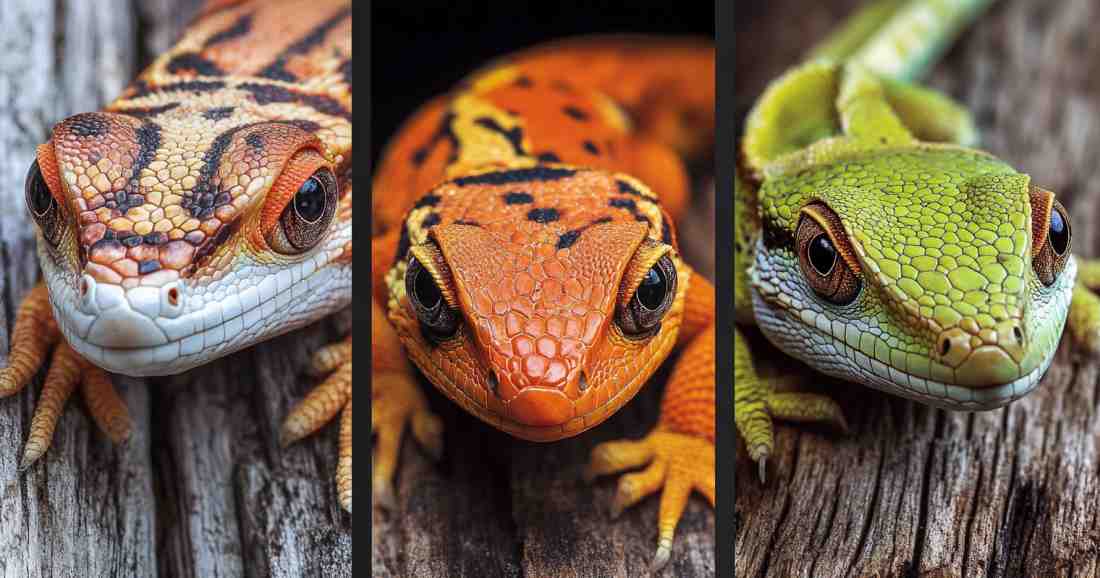
Embark on a reptilian adventure to find the perfect scaly companion in the informative Which Lizard Should I Get Quiz, Discover Your Perfect Reptile Companion. Which Lizard Should I Get Quiz helps you find the ideal lizard species based on your lifestyle, experience level, and care preferences. Lizards, known for their unique personalities, care needs, and striking appearances, range from beginner-friendly geckos to impressive monitors. Are you looking for a calm, easy-to-care-for lizard like a Leopard Gecko or an active, social species like a Bearded Dragon? This quiz evaluates your habits, available space, and commitment level to recommend the perfect lizard for you.
Choosing the right lizard involves understanding their size, habitat needs, temperament, and care requirements. Some lizards, like the Crested Gecko, are low-maintenance and ideal for beginners, while others, like the Green Iguana, require more advanced care and space. Moreover, your lifestyle—whether you prefer hands-on interaction or a more observational pet—plays a crucial role in finding the perfect match. The Which Lizard Should I Get Quiz evaluates these factors to guide you toward your ideal reptilian companion.
Exploring Popular Lizard Options
Different lizard species reflect unique care requirements, personalities, and environmental needs:
- Leopard Gecko: Calm, friendly, and low-maintenance. Ideal for beginners and small enclosures.
- Bearded Dragon: Social, interactive, and easy to handle. Perfect for families and hands-on owners.
- Crested Gecko: Gentle, arboreal, and nocturnal. Best for those who enjoy observing rather than handling.
- Blue-Tongued Skink: Friendly, intelligent, and easygoing. Suitable for intermediate keepers with moderate space.
- Green Iguana: Large, independent, and herbivorous. Best for experienced keepers with spacious enclosures.
- Ackie Monitor: Curious, active, and intelligent. Ideal for experienced reptile enthusiasts with space for climbing and burrowing.
- Uromastyx: Herbivorous, hardy, and heat-loving. Great for beginners seeking a low-maintenance lizard.
- Gargoyle Gecko: Peaceful, arboreal, and easy to care for. Suitable for small terrariums and quiet observation.
- Chameleon: Sensitive, stunning, and complex. Best for advanced keepers who enjoy detailed care routines.
- Savannah Monitor: Large, intelligent, and active. Ideal for experienced owners with plenty of space and time for care.
This quiz helps identify which lizard species aligns with your lifestyle, experience, and care preferences.
How Lifestyle Influences Lizard Choice
Your daily routine, available space, and handling preferences play a crucial role in choosing the right lizard. Are you a beginner seeking an easy-to-care-for lizard, like a Leopard Gecko or Crested Gecko? Or do you enjoy more advanced reptile care, favoring species like the Ackie Monitor or Green Iguana? Moreover, tank size matters—smaller species like Geckos fit compact setups, while larger lizards, like the Savannah Monitor, need spacious environments. This quiz evaluates these factors to recommend the ideal lizard for you.
Habitat and Care Requirements
Lizards vary significantly in their habitat and care needs:
- Low-maintenance species: Leopard Geckos, Crested Geckos, and Uromastyx thrive with simple setups and basic care.
- Moderate-care species: Bearded Dragons, Blue-Tongued Skinks, and Gargoyle Geckos require larger enclosures and regular handling.
- High-maintenance species: Green Iguanas, Chameleons, and Savannah Monitors need specialized habitats and detailed care.
This quiz assesses your time, experience, and space to match you with a lizard that fits your lifestyle.
Fun Facts About Popular Lizard Species
Did you know that Leopard Geckos can detach and regrow their tails as a defense mechanism? Moreover, Bearded Dragons communicate through head bobbing and arm waving, symbolizing social awareness. Interestingly, Chameleons change color not just for camouflage but also to reflect mood and body temperature. This quiz uncovers more fascinating facts while guiding your lizard choice.
Practical Tips for Lizard Ownership
Choosing the right lizard involves more than preference—it’s about providing proper care for a healthy, happy pet:
- Choose the right enclosure: Smaller lizards thrive in compact terrariums, while larger species need spacious habitats.
- Maintain proper lighting and temperature: Most lizards require UVB lighting and heat gradients for health.
- Provide a balanced diet: Some lizards are insectivores, while others prefer vegetables or a mix of both.
- Consider handling preferences: Bearded Dragons and Blue-Tongued Skinks enjoy interaction, while Chameleons prefer observation.
- Plan for long-term care: Many lizards live 10 to 20 years, so long-term commitment is essential.
This quiz not only recommends the best lizard for you but also offers practical tips for responsible ownership.
Take the Which Lizard Should I Get Quiz Now
Curious to find your perfect lizard companion? The Which Lizard Should I Get Quiz offers an engaging way to match your lifestyle, experience, and care capacity with the ideal reptile friend. Moreover, it provides practical insights into habitat setup, diet, and ensuring long-term health. Ultimately, this quiz empowers you to make an informed decision, ensuring both you and your lizard enjoy a happy, healthy life together. Take the quiz now and discover which lizard species is the perfect fit for you!
